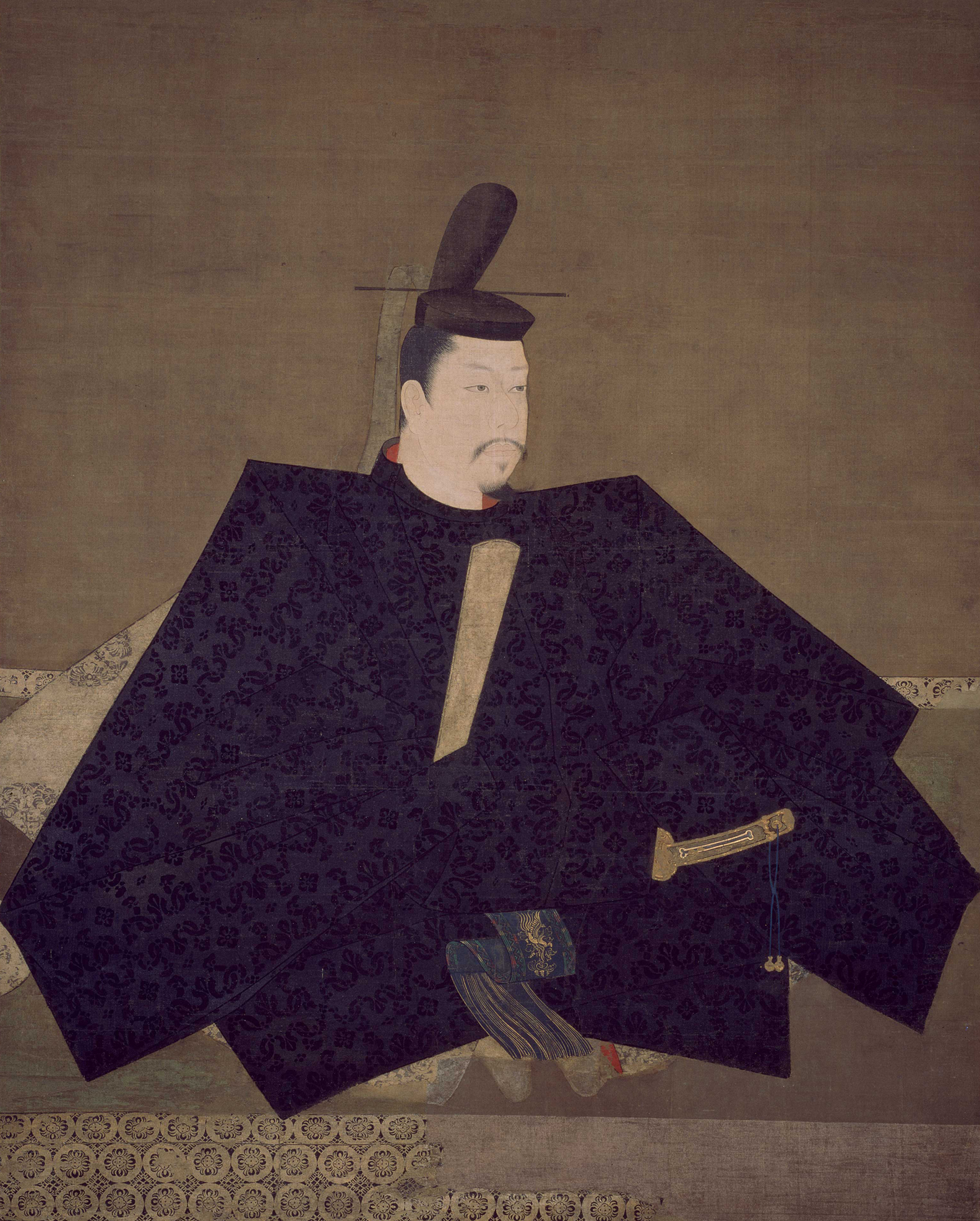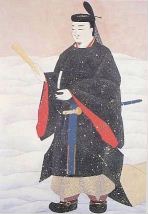|
Asukai Gayū
was a Kamakura period nobleman and poet.Chieko Irie Mulhern - ''Japanese Women Writers: A Bio-Critical Sourcebook 1994'' - Page 3 "According to the diary Saga no kayoi (The Saga Road) by scholar-poet Asukai Masaari (fl. ca. 13th c.), Abutsu had earned a reputation as a scholar among her contemporaries and was living in Saga with Tameie" He lived in Kamakura , officially , is a city of Kanagawa Prefecture in Japan. It is located in the Kanto region on the island of Honshu. The city has an estimated population of 172,929 (1 September 2020) and a population density of 4,359 people per km2 over the tota ... and occupied a high position in the . Eighty six of his poems are represented in the official collection . He also has a personal collection, . References 1241 births 1301 deaths Fujiwara clan Asukai family 13th-century Japanese poets {{japan-writer-stub ... [...More Info...] [...Related Items...] OR: [Wikipedia] [Google] [Baidu] |
Kamakura Period
The is a period of History of Japan, Japanese history that marks the governance by the Kamakura shogunate, officially established in 1192 in Kamakura, Kanagawa, Kamakura by the first ''shōgun'' Minamoto no Yoritomo after the conclusion of the Genpei War, which saw the struggle between the Taira clan, Taira and Minamoto clan, Minamoto clans. The period is known for the emergence of the samurai, the warrior caste, and for the establishment of feudalism in Japan. There are various theories as to the year in which the Kamakura period and Kamakura shogunate began. In the past, the most popular theory was that the year was 1192, when Minamoto no Yoritomo was appointed . Later, the prevailing theory was that the year was 1185, when Yoritomo established the , which controlled military and police power in various regions, and the , which was in charge of tax collection and land administration. Japanese history textbooks as of 2016 do not specify a specific year for the beginning of the K ... [...More Info...] [...Related Items...] OR: [Wikipedia] [Google] [Baidu] |
Kamakura, Kanagawa
, officially , is a Cities of Japan, city of Kanagawa Prefecture in Japan. It is located in the Kanto region on the island of Honshu. The city has an estimated population of 172,929 (1 September 2020) and a population density of 4,359 people per km2 over the total area of . Kamakura was designated as a city on 3 November 1939. Kamakura was Japan's ''de facto'' capital when it was the seat of the Kamakura shogunate from 1185 to 1333, established by Minamoto no Yoritomo. It was the first military government in Japan's history. After the downfall of the shogunate, Kamakura saw a temporary decline. However, during the Edo period, it regained popularity as a tourist destination among the townspeople of Edo (Tokyo), Edo. Despite suffering significant losses of historical and cultural assets due to the 1923 Great Kantō earthquake, Great Kantō Earthquake in 1923, Kamakura continues to be one of the major tourist attractions in the Kanto region, known for its historical landmarks such as ... [...More Info...] [...Related Items...] OR: [Wikipedia] [Google] [Baidu] |
Shōgun
, officially , was the title of the military rulers of Japan during most of the period spanning from 1185 to 1868. Nominally appointed by the Emperor, shoguns were usually the de facto rulers of the country, except during parts of the Kamakura period and Sengoku period when the shoguns themselves were figureheads, with real power in the hands of the of the Hōjō clan and of the Hosokawa clan. In addition, Taira no Kiyomori and Toyotomi Hideyoshi were leaders of the warrior class who did not hold the position of shogun, the highest office of the warrior class, yet gained the positions of and , the highest offices of the aristocratic class. As such, they ran their governments as its de facto rulers. The office of shogun was in practice hereditary, although over the course of the history of Japan several different clans held the position. The title was originally held by military commanders during the Heian period in the eighth and ninth centuries. When Minamoto no Y ... [...More Info...] [...Related Items...] OR: [Wikipedia] [Google] [Baidu] |
Shokukokin Wakashū
The is a Japanese imperial anthology of waka, a type of poetry in classical Japanese literature. It was finished in 1265 CE, six years after the Retired Emperor Go-Saga first ordered it in 1259. It was compiled by Fujiwara no Tameie (son of Fujiwara no Teika) with the aid of Fujiwara no Motoie, Fujiwara no Ieyoshi, Fujiwara no Yukiee, and Fujiwara no Mitsutoshi; like most Imperial anthologies, there is a Japanese and a Chinese Preface, but their authorship is obscure and essentially unknown. It consists of twenty volumes containing 1,925 poems. See also * 1265 in poetry * List of Japanese poetry anthologies References *pg. 484-485 of ''Japanese Court Poetry'', Earl Miner, Robert H. Brower. 1961, Stanford University Leland Stanford Junior University, commonly referred to as Stanford University, is a Private university, private research university in Stanford, California, United States. It was founded in 1885 by railroad magnate Leland Stanford (the eighth ... Press, ... [...More Info...] [...Related Items...] OR: [Wikipedia] [Google] [Baidu] |
1241 Births
Year 1241 ( MCCXLI) was a common year starting on Tuesday of the Julian calendar. Events * March 18 – Battle of Chmielnik ( Mongol invasion of Poland): The Mongols overwhelm the feudal Polish armies of Sandomierz and Kraków provinces, and plunder the abandoned city of Kraków. * April 9 – Battle of Legnica: The Mongols, under the command of Baidar, Kadan and Orda Khan, defeat the feudal Polish nobility, including the Knights Templar. * April 11 – Battle of Mohi: Batu Khan and Subutai defeat Béla IV of Hungary. The battle is the last major event in the Mongol Invasion of Europe. * May – Battle of Giglio: an Imperial fleet defeats a Genoan fleet in the Tyrrhenian Sea. * May 10 – Battle of Cameirge in Ulster: The Milesian Irish septs of the Ó Dónaills from Donegal, the Ó Néills from Armagh and the Ó Dochartaighs of Connacht defeat the last Tuatha Dé Danann sept, the Meic Lochlainn of Tír Eoghain and Inishowen under Domhnall mac Mui ... [...More Info...] [...Related Items...] OR: [Wikipedia] [Google] [Baidu] |
1301 Deaths
Year 1301 (Roman numerals, MCCCI) was a common year starting on Sunday of the Julian calendar. Events January– March * January 14 – With the death of King Andrew III of Hungary, Andrew III ("Andrew the Venetian") after a short illness, possibly from poisoning, the Árpád dynasty, Árpád Dynasty in Kingdom of Hungary (1000–1301), Hungary ends. This results in a power struggle between Wenceslaus III of Bohemia, Otto III, Duke of Bavaria, Otto III of Bavaria, and Charles I of Hungary, Charles Robert of Naples. Eventually, Wenceslaus is elected and crowned as king of Hungary and Croatia in personal union with Hungary, Croatia. His rule is only nominal, because a Oligarch (Kingdom of Hungary), dozen powerful Hungarian nobles hold sway over large territories in the kingdom. * January 25 – Second Mongol invasion of Burma: The forces of Temür Khan, Mongol leader who also serves as the Emperor Chengzong of China, reach Myinsaing, capital of the Myinsaing Kingdom ... [...More Info...] [...Related Items...] OR: [Wikipedia] [Google] [Baidu] |
Fujiwara Clan
The was a powerful family of imperial regents in Japan, descending from the Nakatomi clan and, as legend held, through them their ancestral god Ame-no-Koyane. The Fujiwara prospered since ancient times and dominated the imperial court until the Meiji Restoration in 1868. They held the title of Ason. The abbreviated form is . The 8th century clan history states the following at the biography of the clan's patriarch, Fujiwara no Kamatari (614–669): "Kamatari, the Inner Palace Minister who was also called ‘Chūrō'',''’ was a man of the Takechi district of Yamato Province. His forebears descended from Ame no Koyane no Mikoto; for generations they had administered the rites for Heaven and Earth, harmonizing the space between men and the gods. Therefore, it was ordered their clan was to be called Ōnakatomi" The clan originated when the founder, Nakatomi no Kamatari (614–669) of the Nakatomi clan, was rewarded by Emperor Tenji with the honorific "Fujiwara"after the w ... [...More Info...] [...Related Items...] OR: [Wikipedia] [Google] [Baidu] |
Asukai Family
The Asukai family (飛鳥井家 ''Asukai-ke'') was a Japanese noble family. The family began in the early Kamakura period as a cadet branch of the Fujiwara clan, being founded by Fujiwara (Asukai) no Masatsune. The family excelled at '' waka'' poetry and playing ''kemari'' (an ancient Japanese sport similar to soccer), as well as calligraphy. They had a hand in several of the imperial anthologies of ''waka'', and had close ties to the Kamakura and Muromachi shogunates. History The Asukai family were a branch of the Fujiwara clan, and were known especially for their skill at composing '' waka'' poetry and playing ''kemari'' (Japanese football). Their founder was Fujiwara no Masatsune, a grandson of the great poet and ''kemari'' player . The family's name was derived from a Kanji 井, meaning a well in Japanese, particularly, the well of Asuka (飛鳥井 ''asuka-i'') located near Masatsune's residence. Masatsune was an early ally of the Kamakura shogunate, but also earned the ... [...More Info...] [...Related Items...] OR: [Wikipedia] [Google] [Baidu] |





